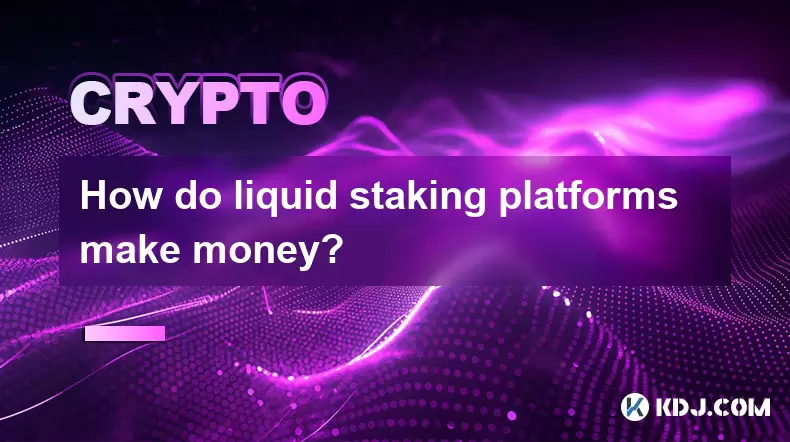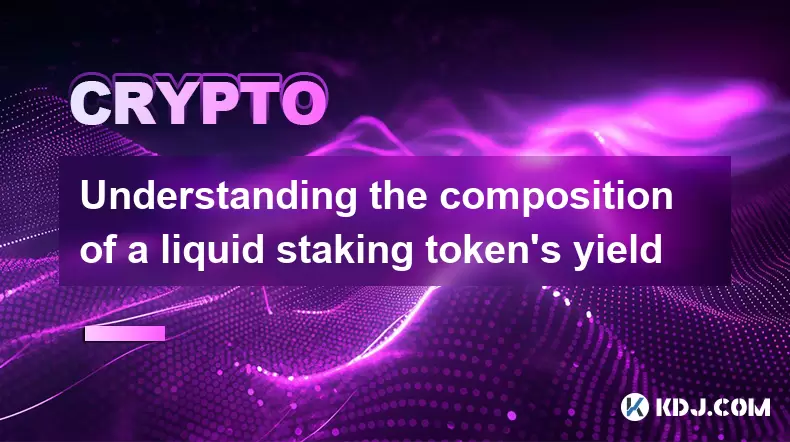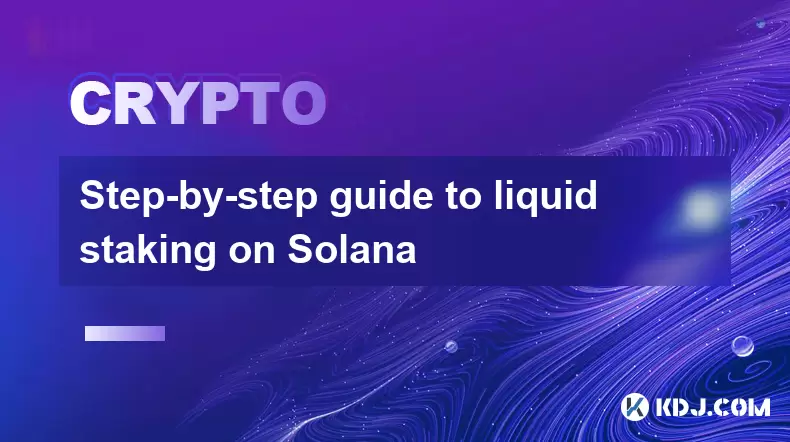-
 Bitcoin
Bitcoin $119000
0.17% -
 Ethereum
Ethereum $3664
-2.12% -
 XRP
XRP $3.229
-7.77% -
 Tether USDt
Tether USDt $1.001
0.02% -
 BNB
BNB $783.2
-1.48% -
 Solana
Solana $191.3
-5.26% -
 USDC
USDC $1.000
0.03% -
 Dogecoin
Dogecoin $0.2450
-7.74% -
 TRON
TRON $0.3115
-1.61% -
 Cardano
Cardano $0.8229
-6.80% -
 Hyperliquid
Hyperliquid $44.17
-2.93% -
 Stellar
Stellar $0.4343
-7.23% -
 Sui
Sui $3.792
-4.09% -
 Chainlink
Chainlink $18.38
-5.73% -
 Hedera
Hedera $0.2491
-7.79% -
 Bitcoin Cash
Bitcoin Cash $518.1
-1.51% -
 Avalanche
Avalanche $24.13
-5.84% -
 Litecoin
Litecoin $113.9
-5.41% -
 UNUS SED LEO
UNUS SED LEO $8.974
-0.21% -
 Shiba Inu
Shiba Inu $0.00001400
-7.98% -
 Toncoin
Toncoin $3.215
-2.09% -
 Ethena USDe
Ethena USDe $1.001
0.03% -
 Polkadot
Polkadot $4.178
-6.84% -
 Uniswap
Uniswap $10.38
-3.05% -
 Monero
Monero $317.8
-1.85% -
 Bitget Token
Bitget Token $4.733
-1.94% -
 Pepe
Pepe $0.00001293
-8.20% -
 Dai
Dai $1.000
0.02% -
 Aave
Aave $292.8
-4.74% -
 Bittensor
Bittensor $430.1
-3.67%
How do liquid staking platforms make money?
Liquid staking lets users earn rewards by locking crypto assets while receiving tradable tokens that can be used in DeFi for added yield.
Jul 22, 2025 at 06:01 am

Understanding Liquid Staking in the Cryptocurrency Ecosystem
Liquid staking is a mechanism that allows users to stake their cryptocurrencies without sacrificing liquidity. When users stake their assets on a blockchain network, those funds are typically locked up for a period of time. Liquid staking platforms solve this issue by issuing tokenized representations of the staked assets, often referred to as liquid staking tokens (LSTs). These tokens can be freely traded, used in decentralized finance (DeFi) protocols, or deposited into yield-generating products. This model creates value for both users and the platforms themselves.
One of the key questions surrounding liquid staking platforms is how they generate revenue. The answer lies in the way these platforms manage staking rewards, fees, and integration with broader DeFi ecosystems. The following sections will explore the primary revenue streams that enable these platforms to remain operational and profitable.
Fee Structures and Revenue Generation
One of the most direct ways that liquid staking platforms make money is through fee structures. These fees are typically charged as a percentage of the staking rewards earned by users. For example, if a user earns 5 ETH in staking rewards over a year, and the platform charges a 10% fee, it would retain 0.5 ETH as its cut.
- Performance-based fees are calculated based on the yield generated from staking.
- Flat service fees may be applied regardless of yield, although this is less common.
- Withdrawal or redemption fees can be charged when users unstake or convert their LSTs back to the native asset.
These fee structures are transparent and usually disclosed upfront, allowing users to make informed decisions about which platform to use.
Yield Optimization and DeFi Integration
Liquid staking platforms often integrate with DeFi protocols to generate additional revenue. Since users receive LSTs in exchange for their staked assets, they can deploy these tokens in liquidity pools, lending protocols, or yield aggregators. This creates a secondary revenue stream not only for users but also for the platform itself, which may earn a portion of the yield generated through these integrations.
- Yield-sharing agreements with DeFi protocols allow platforms to earn a cut of the returns generated by LSTs used in third-party applications.
- Native platform tokens may be issued to incentivize liquidity providers or users, which can be sold or used to generate revenue through tokenomics strategies.
- Liquidity provision on decentralized exchanges (DEXs) using LSTs can generate trading fees, a portion of which flows back to the platform.
This model creates a symbiotic relationship between liquid staking platforms and DeFi protocols, enabling both to grow and generate income.
Token Issuance and Network Incentives
Many liquid staking platforms operate their own native tokens that are used for governance, staking, or as part of incentive mechanisms. These tokens can be a source of revenue through initial sales, inflationary rewards, or as a means to capture value from the ecosystem.
- Airdrops or incentives from blockchain networks or DeFi protocols can be distributed to users or retained by the platform.
- Token emissions can be used to reward users who provide liquidity or stake LSTs within the platform’s ecosystem.
- Revenue-sharing tokens may entitle holders to a portion of the platform’s earnings, creating a recurring income source for the business model.
By leveraging tokenomics, liquid staking platforms can align incentives with users while ensuring a sustainable revenue model.
Partnerships and Infrastructure Services
Some liquid staking platforms generate income by offering infrastructure services to other projects or institutions. These include staking-as-a-service solutions, validator node management, or integration tools for developers building on top of the platform.
- Enterprise staking solutions cater to institutional clients who want to stake large amounts of crypto without managing the technical complexities.
- Validator services allow platforms to run validator nodes on behalf of users or third parties, earning a fee for node operation and maintenance.
- API access and toolkits for developers can be monetized through subscription models or usage-based pricing.
These services expand the platform’s utility and provide a diversified revenue stream beyond direct staking activities.
Frequently Asked Questions
Are liquid staking platforms safe to use?
Safety depends on the platform’s reputation, security audits, and transparency. Users should research the platform’s history, governance model, and smart contract security before depositing funds. Some platforms are centralized, while others are decentralized, and each comes with its own risk profile.
Can I lose money using liquid staking?
Yes, there are risks such as smart contract vulnerabilities, slashing penalties (if the validator misbehaves), and impermanent loss when using LSTs in DeFi. Users should understand these risks and only stake funds they can afford to lose.
How are liquid staking tokens valued?
LSTs typically track the value of the underlying staked asset, plus accrued rewards. Over time, the exchange rate between the LST and the native token increases as staking rewards are distributed to token holders.
Do all blockchains support liquid staking?
No, liquid staking is more common on proof-of-stake (PoS) blockchains such as Ethereum, Cosmos, and Solana. It requires a staking mechanism that allows token delegation and the issuance of derivative tokens representing staked assets.
Disclaimer:info@kdj.com
The information provided is not trading advice. kdj.com does not assume any responsibility for any investments made based on the information provided in this article. Cryptocurrencies are highly volatile and it is highly recommended that you invest with caution after thorough research!
If you believe that the content used on this website infringes your copyright, please contact us immediately (info@kdj.com) and we will delete it promptly.
- XRP, Solana, and Institutional Adoption: A New Era for Crypto?
- 2025-07-24 11:10:12
- Dogecoin, Remittix, and Crypto Protocols: The Evolution of Digital Finance
- 2025-07-24 10:50:12
- BlockDAG, Hedera, and Stellar: Charting the Course for Crypto's Future
- 2025-07-24 10:50:12
- BlockDAG's No-Vesting Edge: Can It Outpace Cardano's Price?
- 2025-07-24 11:10:12
- South Korea's Credit Card Industry Embraces Stablecoin Regulations: A New Era?
- 2025-07-24 10:30:12
- Bitcoin, SHIB, and Institutional Momentum: Decoding Crypto's 2025 Trajectory
- 2025-07-24 11:15:12
Related knowledge

Understanding the composition of a liquid staking token's yield
Jul 20,2025 at 09:07am
What Is a Liquid Staking Token?A liquid staking token is a representative asset issued to users who stake their native cryptocurrency on a proof-of-st...

Is it better to stake directly or use a liquid staking service?
Jul 22,2025 at 08:21pm
Understanding the Basics of StakingStaking in the context of blockchain and cryptocurrency refers to the process of locking up digital assets to suppo...

What to do during an LST depeg event
Jul 20,2025 at 04:57pm
Understanding LST Depeg EventsAn LST (Liquid Staking Token) depeg event occurs when the token, which is typically pegged to the value of the underlyin...

Can you provide liquidity with liquid staking tokens?
Jul 22,2025 at 10:22am
Understanding Liquid Staking TokensLiquid staking tokens (LSTs) are derivative tokens that represent staked assets on a proof-of-stake (PoS) blockchai...

What are the best wallets for storing LSTs?
Jul 21,2025 at 03:14pm
Understanding LSTs and the Need for Secure StorageLSTs, or Liquid Staking Tokens, are derivative tokens representing staked assets on a blockchain. Wh...

Step-by-step guide to liquid staking on Solana
Jul 20,2025 at 06:42am
What is Liquid Staking on Solana?Liquid staking is a mechanism that allows users to stake their cryptocurrency while retaining liquidity through the i...

Understanding the composition of a liquid staking token's yield
Jul 20,2025 at 09:07am
What Is a Liquid Staking Token?A liquid staking token is a representative asset issued to users who stake their native cryptocurrency on a proof-of-st...

Is it better to stake directly or use a liquid staking service?
Jul 22,2025 at 08:21pm
Understanding the Basics of StakingStaking in the context of blockchain and cryptocurrency refers to the process of locking up digital assets to suppo...

What to do during an LST depeg event
Jul 20,2025 at 04:57pm
Understanding LST Depeg EventsAn LST (Liquid Staking Token) depeg event occurs when the token, which is typically pegged to the value of the underlyin...

Can you provide liquidity with liquid staking tokens?
Jul 22,2025 at 10:22am
Understanding Liquid Staking TokensLiquid staking tokens (LSTs) are derivative tokens that represent staked assets on a proof-of-stake (PoS) blockchai...

What are the best wallets for storing LSTs?
Jul 21,2025 at 03:14pm
Understanding LSTs and the Need for Secure StorageLSTs, or Liquid Staking Tokens, are derivative tokens representing staked assets on a blockchain. Wh...

Step-by-step guide to liquid staking on Solana
Jul 20,2025 at 06:42am
What is Liquid Staking on Solana?Liquid staking is a mechanism that allows users to stake their cryptocurrency while retaining liquidity through the i...
See all articles

























































































